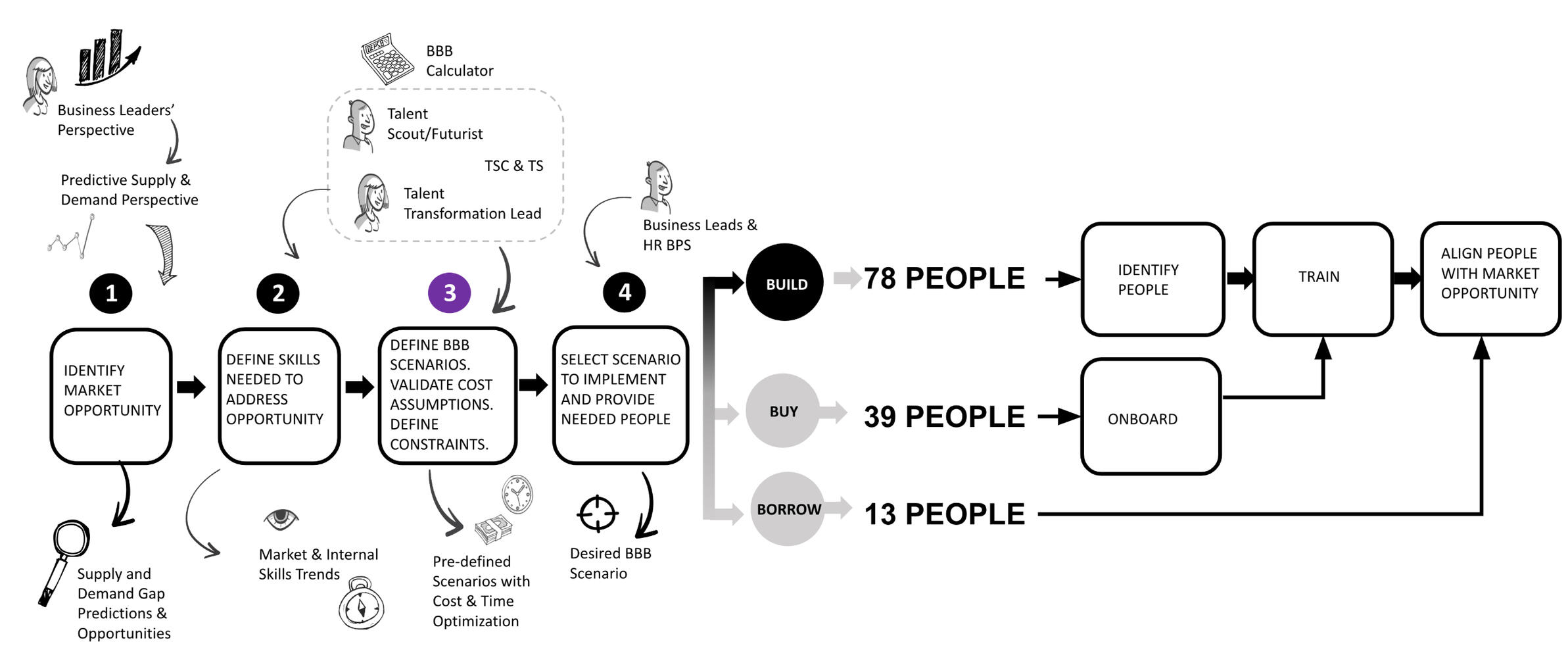
We help propel your capabilities with AI-enhanced solutions, dramatically increasing operational efficiency.We build robust narratives with data to ensure you communicate insights effectively.We develop tactical business plans to ensure you have an informed strategy.
Offerings

Storytelling with Data
"Our reports are cluttered and confusing."
Let's build visual narratives that empower you to make smarter decisions faster, communicate more effectively, and gain deeper insights into your business.
4 Sessions / Visualization



Custom AI Bots
"We're spending too much time on busy work instead of strategic thinking."
Let's build and fine-tune a private customized AI bot to tackle your unique business challenges. By securely learning from your documentation, it excels at grunt work like writing proposals, conducting research, providing social media support, and answering questions based on your proprietary information. Our simple word-count pricing ensures you only pay for what you use, allowing you to streamline operations and focus on high-impact strategies that propel your business forward.
3 month engagement

Business Intelligence
"We have complex questions that simple dashboards can't answer."
Ready for the cutting edge? Let's design AI for BI (Business Intelligence) that goes far beyond basic reporting, utilizing advanced analytics and logic models to answer questions that keep you up at night. Our tools can forecast market trends and customer behaviors, helping you stay ahead of the competition and make proactive business decisions. Plus, use historical data and market indicators to create accurate financial projections, supporting better budgeting and investment decisions
5 month engagement

Contact Us
Reach out and we'll circle back in two shakes of an electric sheep's tail!
What are People Saying?
We're proud to have worked alongside amazing teams, check out what they have to say.
Want to learn more about our founder?
Beyond the tech: Meet the innovator harnessing AI to build tomorrow's solutions
© The Data Alchemists. All rights reserved.
Endorsements
"I consider it a privilege to have had the opportunity to work alongside Mike on our global people analytics team. Mike is passionate and driven to add value. Mike is an absolute pleasure to work with and brings a calming presence to any conversation and creative ideas to any program or initiative. Mike didn’t shy away from new and unique challenges. It was a pleasure working with Mike and I would welcome the opportunity again in the future."
- Steve C., Director

"In my experience, I have found Mike to be a very personable and thoughtful collaborator who is driven to bring scale to projects by the use of the right technology. He is very knowledgeable about HR technology and uses design thinking to design and solve for scaling issues. It has been a pleasure working with him!"- Gargi B., Ph.D.

"At young, fast-growing organizations, it is a challenge to balance design-based approaches over churning out deliverables as quickly as possible. Bringing in The Data Alchemists allowed us to take the time to engage with incredibly busy stakeholders across the organization. They ensured we listened to, documented, and understood their challenges, needs, and ideas while not deterring us from solving immediate issues. The Data Alchemists' experience in working with a diverse array of people and roles allowed them to seamlessly work with everyone from C-suite executives, to clinicians, to program managers, to engineers. Their experience collaborating with different types of teams to solve a wide array of challenges was on clear display.The Data Alchemists ran efficient and effective sessions that guided us through multiple stages of design thinking techniques and made attendees feel at ease and understand the intentions and value of each session. Their approach fostered a collaborative environment that did not bog down with pure discussion points. In particular, they were able to provide individuals space to brainstorm while still challenging ideas in a way that ensured we captured the intentions of needs to validate the objectives were focused on improving our operations or improving care for patients.The design-thinking workshops were a fundamental pillar in making our organization a data-driven learning-healthcare system. The roadmap we were able to construct from The Data Alchemists' time working with stakeholders is invaluable. It provided a clear pathway for all stakeholders to have their needs met with agreement in prioritization across teams, no small feat unto itself, and gave the implementers clear guidance on where to focus.As an organization, we will only be able to thrive if we utilize our data effectively to improve access to care, enhance our operational efficiencies, expand our reach, and ultimately provide high-quality care and services to those in need. To do that, we fully intend to continue our engagement with The Data Alchemists. Their human-centered approach is essential as our organization grows in size with more stakeholder roles and more unique challenges to ensure we are able to effectively navigate the complex landscape of Type-1 diabetes care.Sincerely,
Thien Nguyen
VP Information Systems
Blue Circle Health

"Mike is a creative thinker and passionate about his work. He is an excellent speaker and able to present complex concepts to senior level leaders clearly and persuasively."- Lisa D., Senior Manager

Case Study: Design-Thinking Workshops for a Type 1 Diabetes Healthcare Organization
According to a survey by the Design Management Institute (DMI), 69% of organizations that were surveyed in 2016 reported that design thinking was used to a varying degree within their organization.

Case Study: Design-Thinking Workshops to help a type 1 diabetes (T1D) healthcare organization better serve people with diabetes.Introduction:
T1D affects millions of people in the United States. It is a complicated disease to manage and healthcare disparities prevent access to the care, supplies, and support underserved communities need.Challenge: A T1D healthcare organization was looking to become a data-driven learning healthcare system to expand their care, and develop effective solutions to operationalize virtual care to address the challenges faced by people with T1D.Solution: As a seasoned group of experts in design thinking, we worked with the T1D healthcare organization to run a 3-month series of design thinking workshops. These workshops brought together stakeholders from across the organization and included a diverse mix of participants, including, healthcare professionals, clinical operations leads, financial controllers, data scientists, and system engineers.Through these workshops, we used a variety of design thinking techniques, such as empathy mapping, journey mapping, prioritization techniques, user story development, and data visualization prototyping. We worked collaboratively to develop innovative solutions that addressed the challenges faced by the organization, such as enhancing operating efficiencies, expanding geographic scope, and providing high-quality care and services.Results: The design thinking workshops had a significant impact on the T1D healthcare organization. By engaging stakeholders in a collaborative problem-solving process, designed and laid the foundational roadmap for building a data-driven learning healthcare system that includes all aspects of operationalizing and measuring the success of a virtual healthcare organization. This, in turn, led to the development of data solutions with effective collaboration across cross-functional teams, more timely implementations for stakeholders, and ensured shared definitions and understanding of data nuances across the organization.
© The Data Alchemists. All rights reserved.
Case Study: Storytelling with a Private Equity Firm
"Data storytelling is a powerful way to communicate insights and drive action within an organization. By framing data within a compelling narrative, data storytellers can engage stakeholders, build empathy, and inspire action. Data storytelling helps organizations to make better decisions, communicate more effectively, and ultimately drive success." - Cole Nussbaumer Knaflic

Case Study: Designing dashboards to tell powerful narratives for a private equity firmChallenge: A private equity firm was struggling to effectively communicate insights and drive action based on its vast amounts of data. The firm needed a new approach to data visualization that would help them tell powerful narratives and engage stakeholders.Solution: As a seasoned group of experts in data visualization, we worked with the private equity firm to design a series of dashboards that would help them tell powerful narratives and communicate insights effectively.Through a series of collaborative workshops and design iterations, we worked with the firm's leadership team to identify key performance indicators (KPIs) and develop a dashboard framework that accurately reflected the firm's investment portfolio and growth potential. The dashboards included a variety of data sources, such as financial data, operational data, and market data, and used advanced visualization techniques to tell compelling stories and engage stakeholders.Using these dashboards, the private equity firm was able to communicate complex insights effectively and drive action across its portfolio companies. For example, they were able to identify areas where portfolio companies could improve their financial performance and develop targeted interventions to address these areas. They were also able to track market trends and identify new investment opportunities.Results: The dashboards had a significant impact on the private equity firm's operations. By providing a compelling and engaging way to communicate insights and drive action, the dashboards helped the firm make more informed investment decisions and improve portfolio company performance.Specific results of the project included:- A series of dashboards that accurately reflected the firm's investment portfolio and growth potential**
- Improved ability to communicate complex insights effectively and engage stakeholders across the firm's portfolio companies
- Identification of key areas where portfolio companies could improve their financial performance and targeted interventions developed
- Improved ability to track market trends and identify new investment opportunitiesOverall, the dashboards were a success, and the private equity firm was able to use the insights gained from the dashboards to drive success across its portfolio companies and achieve sustainable growth and profitability.
© The Data Alchemists. All rights reserved.
AI-Powered Precision: How a Custom Bot Boosted a Consumer Packaged Good Company's Social Media Engagement by 250%
"AI is a new digital frontier that will change everything about how we work and live. Companies that embrace it will have a significant competitive advantage." - Mark Cuban, entrepreneur and investor

Case Study: Leveraging a Custom AI Bot to create a cutting-edge social media strategy for a CPG (Consumer Packaged Good) companyChallenge: A B2B software company, was struggling to gain traction on social media platforms despite offering innovative products. The company had a limited social media presence and was unable to effectively communicate its complex offerings to its target audience or generate quality leads through social channels.Solution: We implemented a Custom AI Bot, tailored to the CPG company's unique needs, to develop and refine their social media strategy. The Custom AI Bot was trained on the CPG company proprietary information, including product documentation, past marketing campaigns, customer feedback, and industry reports. It also continuously analyzed current social media trends, competitor activities, and audience behaviors across platforms.Using this vast pool of data, the AI Bot:
- Identified optimal posting times and frequencies for each platform
- Generated content ideas aligned with the CPG company brand voice and audience interests
- Suggested relevant hashtags and keywords to improve discoverability
- Analyzed engagement patterns to refine content strategy in real-time
Identified potential influencers and partnership opportunities in the B2B tech space
- Provided predictive analytics on content performance and audience growth
- The bot also created a dynamic content calendar, automatically adjusting based on performance data and emerging trends. It suggested A/B tests for different content types and messaging approaches, continuously learning from the results to improve future recommendations.Results: The Custom AI Bot's approach to social media strategy development had a significant impact on the CPG company's online presence and lead generation efforts. By providing data-driven, real-time insights and recommendations, the bot enabled the CPG company to create a highly effective and adaptive social media strategy.
Specific results of the project included:
- 300% increase in LinkedIn followers over six months
- 250% increase in engagement rate across all social media platforms
- 180% increase in website traffic from social media channels
- 100% increase in qualified leads generated through social media
- Successful implementation of 15 A/B tests, resulting in a 50% improvement in average post performance
- Development of 5 high-impact thought leadership series based on AI-identified audience interestsOverall, the Custom AI Bot's approach to social media strategy was a resounding success. The CPG company was able to establish a strong social media presence, effectively communicate its complex offerings, and significantly increase its lead generation through social channels. The company reported a 70% increase in social media-influenced sales within the first year of implementation, largely attributed to the bot's data-driven, adaptive strategy development.
© The Data Alchemists. All rights reserved.
Case Study: Build, Buy, Borrow, Bot
"Business intelligence is not just a tool or a technique, it is a mindset that enables organizations to make data-driven decisions and gain a competitive advantage. By providing insights into key performance indicators, market trends, and customer behavior, business intelligence empowers organizations to make informed decisions, identify new opportunities, and drive growth." - Bernard Marr

Case Study: Building a business intelligence model to optimize resource allocationChallenge: A leading technology company was struggling to allocate resources effectively and balance investments in building capabilities, recruiting people, contracting, or automating. The company needed a new approach to resource allocation that would help them better understand the impact of their investments and make more informed decisions about where to allocate resources.Solution: As a seasoned consulting firm with expertise in business intelligence modeling, we worked with the technology company to build a robust business intelligence model that would provide insights into the impact of their investments and help them optimize resource allocation.Through a series of collaborative workshops and data analysis sessions, we worked with the company's leadership team to identify key performance indicators (KPIs) and develop a business intelligence model that accurately reflected the company's operations and growth potential. The model included a variety of data sources, such as financial data, operational data, and market data, and used advanced analytics techniques to identify trends and patterns in the data, learn, and adapt using success metrics.Using the business intelligence model, we were able to provide the company with insights into the impact of their investments and help them make more informed decisions about where to allocate resources. For example, we were able to identify areas where the company could optimize its operations and reduce costs through automation, as well as areas where additional investment in building capabilities or recruiting people would have the greatest impact on growth and profitability.Results: The business intelligence model had a significant impact on the technology company's operations. By providing a comprehensive view of the impact of their investments and resources, the model helped the company make more informed decisions and optimize resource allocation.
Specific results of the project included:- A comprehensive business intelligence model that provided insights on how to balance investments and resources
- Identification of key areas where the company could optimize its operations and reduce costs through automation
- Identification of areas where additional investment in building capabilities or recruiting people would have the greatest impact on growth and profitability
Improved ability to make informed decisions and allocate resources more effectively
Overall, the business intelligence model was a success, and the technology company was able to use the insights gained from the model to optimize its operations, reduce costs, and achieve sustainable growth and profitability.
© The Data Alchemists. All rights reserved.






